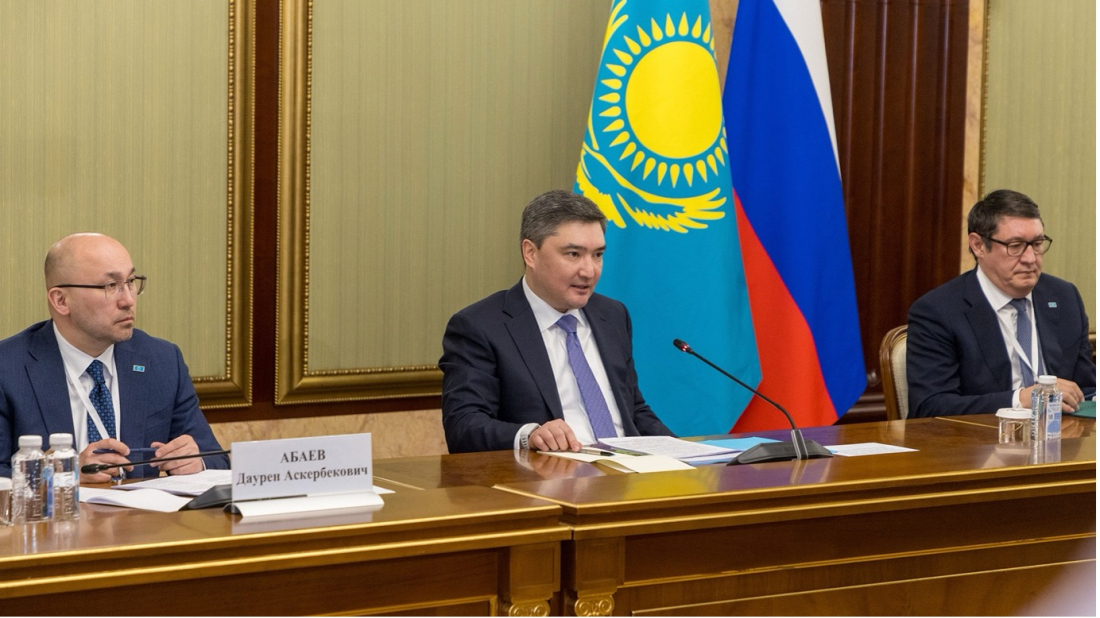All 40 Victims of Crans-Montana Bar Fire Identified
Swiss police have confirmed that all 40 victims of the New Year’s Eve fire at a bar in the mountain resort of Crans-Montana have now been identified...

Kazakhstan and Russia are set to launch 27 new joint projects worth $8 billion, signalling a notable expansion in bilateral economic cooperation.
The announcement was made during Kazakh Prime Minister Olzhas Bektenov’s official visit to Moscow on April 21, where he met with his Russian counterpart, Mikhail Mishustin.
“This is a historic figure,” Bektenov said, referring to the $4 billion in Russian investment Kazakhstan received in 2024—a 32% increase over the previous year.
Currently, more than 23,000 companies with Russian participation operate in Kazakhstan, making up nearly 40% of all foreign enterprises in the country. These companies are active in critical sectors such as mechanical engineering, metallurgy, and chemicals. Notably, one in every three foreign-capital enterprises in Kazakhstan involves a Russian partner.
Bilateral trade reached $27.8 billion in 2024, and both nations aim to raise that to $30 billion in the near term. Over the past 20 years, Russian investors have poured $26 billion into Kazakhstan, while Kazakh businesses have invested approximately $9 billion in Russia.
Moscow continues to underscore Kazakhstan’s role as a strategic partner in the Eurasian region, with nearly 70% of trade conducted through direct cooperation between regional authorities.
Meanwhile, European interest in Central Asia is growing. Italian Prime Minister Giorgia Meloni is set to visit Uzbekistan on April 25–26, followed by a trip to Astana to participate in the inaugural “Central Asia–Italy” summit. Leaders from all five Central Asian nations are expected to attend.
Italy’s engagement with Kazakhstan is especially robust. Italian companies, active in the country since 1992, are involved in energy, agriculture, mechanical engineering, and hydropower projects. The country is already one of Kazakhstan’s top three trading partners and ranks fifth in foreign direct investment. In 2024 alone, bilateral trade has approached $20 billion.
This European outreach follows the recent Central Asia–EU Summit in Samarkand, where the European Union unveiled a €12 billion investment package aimed at deepening economic ties with the region.
Kazakhstan’s global importance is also rising due to its vast reserves of rare earth minerals. Just days before the EU summit, Kazakh authorities announced the discovery of a major rare earth deposit in the Karaganda region, estimated to hold nearly one million tons of critical elements such as cerium, lanthanum, neodymium, and yttrium—materials vital to digital and green technologies.
The “Central Asia plus one” format has become a popular diplomatic tool for Western countries — whether it’s the EU, Germany, the United States, Japan, or now Italy. As global competition for influence intensifies, Central Asia is emerging as a focal point of international diplomacy. And each new summit is no longer just a formality — it’s part of a broader geopolitical contest for the heart of Eurasia.
Turkish President Recep Tayyip Erdoğan has warned that the Russia-Ukraine war is now threatening trade in the Black Sea.
Teenagers as young as 14 and 15 years old were among those who died in the bar fire on New Year's Eve that killed 40 people in Switzerland, police said on Sunday.
North Korea fired a ballistic missile into the East Sea, according to South Korea and Japan, as regional diplomacy and security concerns remain in focus.
The United States launched an overnight military operation in Venezuela and captured its long-serving President Nicolás Maduro on Saturday, U.S. President Donald Trump said, pledging to place the country under temporary American control and signalling that U.S. forces could be deployed if necessary.
The UN Security Council will hold an emergency meeting Monday to discuss the U.S. operation in Venezuela.
President Ilham Aliyev has held talks with a bipartisan U.S. congressional delegation in Baku, focusing on regional peace efforts, expanding bilateral ties and new transport links.
Azerbaijan and Türkiye have signed an agreement covering the supply of 33 billion cubic metres of natural gas, Turkish Minister of Energy and Natural Resources Alparslan Bayraktar said.
Turkish President Recep Tayyip Erdoğan has warned that the Russia-Ukraine war is now threatening trade in the Black Sea.
U.S. authorities say they have thwarted an ISIS‑inspired terrorist attack planned for New Year’s Eve in the town of Mint Hill, North Carolina, arresting an 18‑year‑old suspect just hours before the alleged assault was due to take place.
The Head of Iran’s Atomic Energy Organisation (AEOI) Mohammad Eslami unveiled that the country’s civilian nuclear program has been the target of industrial sabotage by the Israeli and the U.S. intelligent agencies for the last three decades.
You can download the AnewZ application from Play Store and the App Store.

What is your opinion on this topic?
Leave the first comment